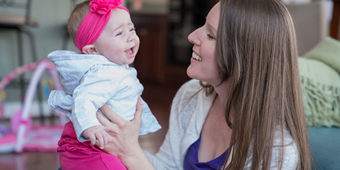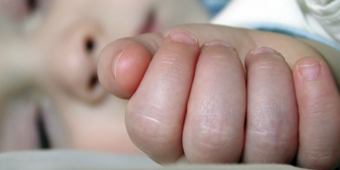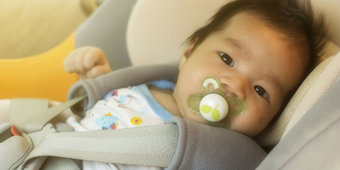Room Share to Reduce the Risk of SIDS
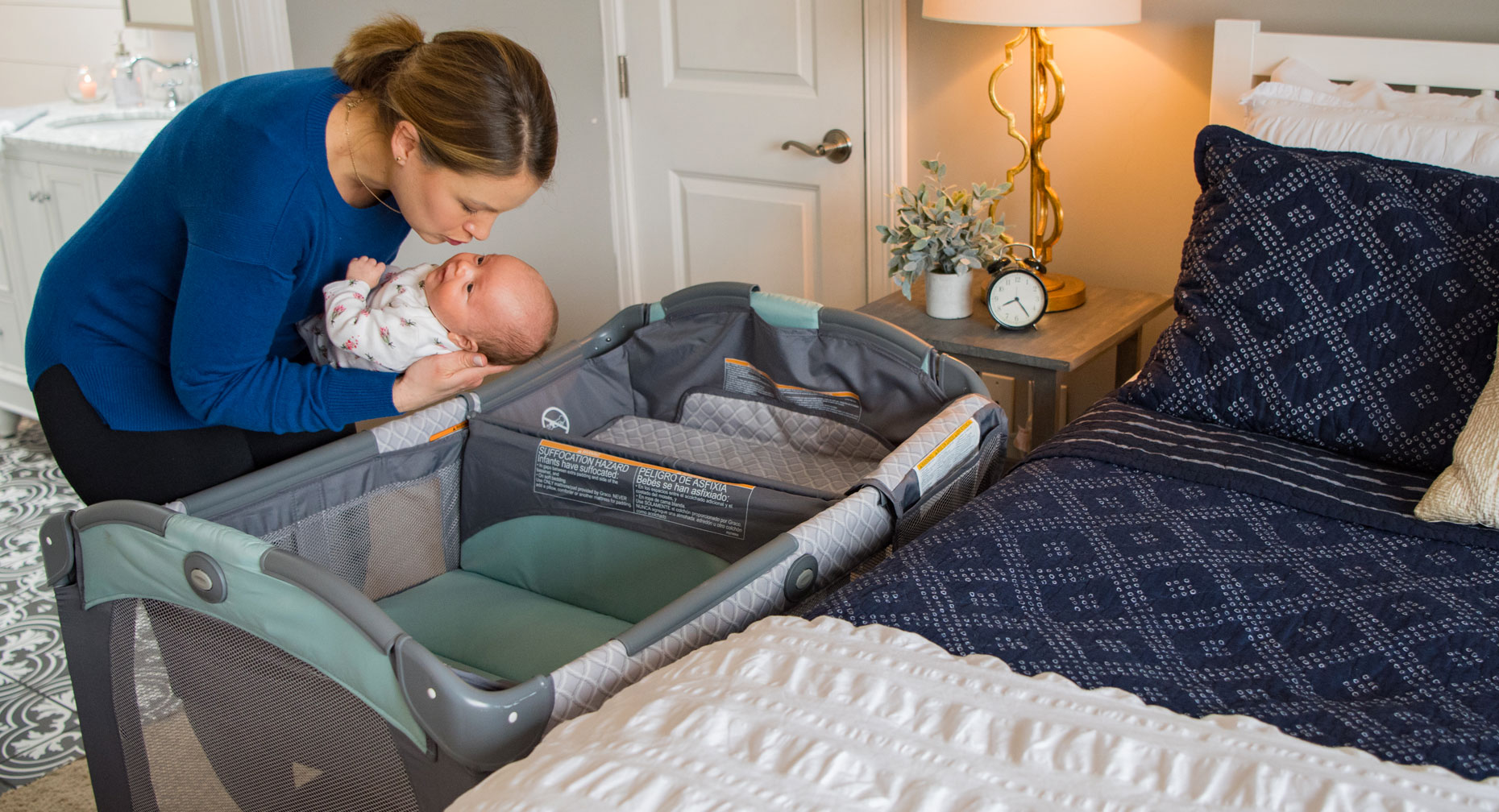
Answer a few questions and we'll provide you with a list of primary care providers that best fit your needs.
When parents began putting their babies to sleep on their backs in the 1990s, the rates of sudden infant death syndrome (SIDS) and other sleep-related deaths dropped. But that rate has remained rather steady in recent years.
More than 3,500 babies still die suddenly and unexpectedly during their sleep each year in the United States. In an effort to prevent more of these deaths, the American Academy of Pediatrics (AAP) updated its guidelines regarding safe sleep for infants in October 2016.
Why Your Baby Needs Space
A safe sleep environment has been shown to reduce the risk of SIDS in infants up to 1 year of age. The AAP’s updated guidelines recommend that infants sleep in the same room with their parents for the first six months of life, and up to 12 months if possible.“Room sharing is a much safer option for infants than bed sharing,” says Marc Belcastro, DO, a neonatologist with Premier Health. “When parents share a bed with their baby, there is an increased risk of accidental suffocation, strangulation and entrapment.”
The bottom line is, babies should not sleep in an adult bed. Instead, place your baby to sleep in his or her own sleep space close to you. This allows you to easily see, comfort and monitor your infant while reducing the risk of SIDS by as much as 50 percent.
What Bed Is Right for Baby?
Babies’ sleep spaces change as they grow. You might start with a bassinet or co-sleeper right by your bed. When your little one gets too big for that, consider moving him or her to a portable crib or travel playard in your room, before eventually using a crib.
“It’s much easier for parents to put their babies back to sleep when they’re in the same room, versus having to walk down the hall to a separate bedroom,” Dr. Belcastro says. “Room sharing just makes good, practical sense. It’s safer and easier.”
Other Safe Sleep Recommendations Still Hold True
In addition to room sharing, the AAP continues to emphasize these safe sleep practices, which also aid in reducing the risk of SIDS:
Room sharing is a much safer option for infants than bed sharing,” says Marc Belcastro, DO.
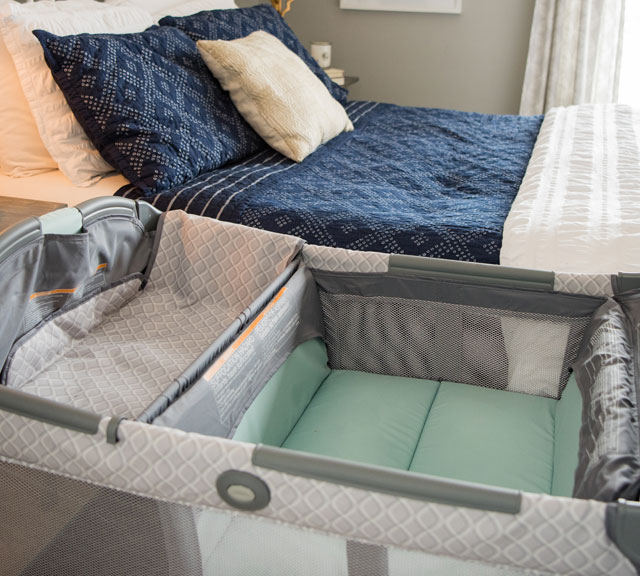 Put babies to sleep on their backs. This is important to do until your baby’s first birthday. However, once babies are comfortable rolling over — both back to tummy and tummy to back — you no longer need to roll them back over from their tummies while they’re sleeping.
Put babies to sleep on their backs. This is important to do until your baby’s first birthday. However, once babies are comfortable rolling over — both back to tummy and tummy to back — you no longer need to roll them back over from their tummies while they’re sleeping.- No fluffy stuff. Babies should sleep alone in their own sleep space with nothing else in bed with them. Remove all soft objects, loose bedding, stuffed animals and crib bumpers.
- Use a firm sleep surface. Use a tight-fitting sheet on a firm mattress. Make sure your crib, bassinet or playard meets the safety standards of the Consumer Product Safety Commission (CPSC).
- Breastfeed. Research has shown breastfed babies to have a lower risk of SIDS.
- Do not place baby on a couch or armchair to sleep. These surfaces aren’t firm enough; they are dangerous places for an infant to sleep.
- Offer a pacifier at naptime and bedtime. Even if the pacifier falls out after your baby has fallen asleep, sucking on a pacifier has been shown to help reduce the risk of SIDS. Remember to talk with your doctor about a pacifier’s impact on breastfeeding.
- Swaddling is OK. Be sure to swaddle your baby when he is on his back and with the legs flexed. Stop swaddling when your baby starts rolling over. A sleep sack is a good alternative to swaddling.
“The risk of SIDS is highest during the first six months of a child’s life, so it’s particularly important to pay attention to these precautions during that time,” Dr. Belcastro says.
Answer a few questions and we'll provide you with a list of primary care providers that best fit your needs.
Source: American Academy of Pediatrics; Marc Belcastro, DO, Premier Health


